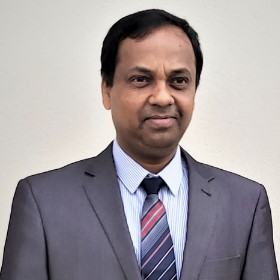Current Advances in Microalgal Biotechnology
A special issue of Sustainability (ISSN 2071-1050). This special issue belongs to the section "Sustainable Chemical Engineering and Technology".
Deadline for manuscript submissions: closed (31 January 2023) | Viewed by 27163
Special Issue Editor
Interests: cyanobacteria, diatoms, microalgal biotechnology; sustainable biomass production; biomass valorization for bioactive compounds, nutritional ingredients, and bioenergy production; cyanobacterial polyphasic taxonomy and stress biology; molecular biology and genetics of cyanobacteria
Special Issues, Collections and Topics in MDPI journals
Special Issue Information
Dear Colleagues,
In the recent past, algae in general and microalgae in particular, have received renewed attention from biotechnologists around the world for the sustainable production of biofuels. The traditional use of microalgae can be traced back several decades within the indigenous populations around the world especially in China, Japan, and the Republic of Korea. Cyanobacteria and microalgae have been reported as a ‘treasure house’ for a variety of bioactive compounds and nutritional ingredients. However, only a handful of organisms for a few bioactive compounds have been used as nutraceuticals. Commercial cultivation of microalgae is very recent, and much more has to happen to get the broad spectrum of benefits of this group of organisms. Although microalgal biotechnology for nutraceutical applications are a fast-growing segment of health and nutrition industries today, there are tremendous opportunities for biorefinery of microalgal biomass. Eventually, the complete use of microalgal biomass for value-added molecules, bioenergy production, fertilizer use, animal feed, and/or aqua feed use as appropriate, would help in sustainable development and circular bioeconomy.
Continuous efforts have been made in various mass cultivation technologies, including photobioreactor technologies, and are still developing since some cultivation methods are microalgae species-specific as well as regional weather condition specific. There are still challenges in biomass cultivation and biomass end-use, and especially the cost for biofuels production. Therefore, simple, robust and cheaper biomass cultivation methods may also be adopted, which may boost regional entrepreneurship with minimum investment. Thus, widening the opportunity for sustainable biomass production either for whole biomass consumption and/or bioenergy production through the route of biomass production during bioremediation.
This Special Issue invites authors to contribute on the recent developments including original review articles, original research articles, comments on innovative simple (low-cost) cultivation technology, and applications that worked or was a failed attempt.
Dr. Sushanta Kumar Saha
Guest Editor
Manuscript Submission Information
Manuscripts should be submitted online at www.mdpi.com by registering and logging in to this website. Once you are registered, click here to go to the submission form. Manuscripts can be submitted until the deadline. All submissions that pass pre-check are peer-reviewed. Accepted papers will be published continuously in the journal (as soon as accepted) and will be listed together on the special issue website. Research articles, review articles as well as short communications are invited. For planned papers, a title and short abstract (about 100 words) can be sent to the Editorial Office for announcement on this website.
Submitted manuscripts should not have been published previously, nor be under consideration for publication elsewhere (except conference proceedings papers). All manuscripts are thoroughly refereed through a single-blind peer-review process. A guide for authors and other relevant information for submission of manuscripts is available on the Instructions for Authors page. Sustainability is an international peer-reviewed open access semimonthly journal published by MDPI.
Please visit the Instructions for Authors page before submitting a manuscript. The Article Processing Charge (APC) for publication in this open access journal is 2400 CHF (Swiss Francs). Submitted papers should be well formatted and use good English. Authors may use MDPI's English editing service prior to publication or during author revisions.
Keywords
- Sustainable biomass production
- Biorefinery and valorization
- Microalgal biotechnology
- Biodiesel, bioethanol, biogas, and biofuel
- High value-added molecules (antioxidants, carotenoids, bioactive lipids, and fatty acids)
- Functional ingredients for food and cosmetics
- Aqua feed, animal feed, and bio-fertilizer
Benefits of Publishing in a Special Issue
- Ease of navigation: Grouping papers by topic helps scholars navigate broad scope journals more efficiently.
- Greater discoverability: Special Issues support the reach and impact of scientific research. Articles in Special Issues are more discoverable and cited more frequently.
- Expansion of research network: Special Issues facilitate connections among authors, fostering scientific collaborations.
- External promotion: Articles in Special Issues are often promoted through the journal's social media, increasing their visibility.
- e-Book format: Special Issues with more than 10 articles can be published as dedicated e-books, ensuring wide and rapid dissemination.
Further information on MDPI's Special Issue polices can be found here.





